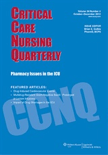
Critical Care Nursing Quarterly
Scope & Guideline
Shaping the Future of Critical Care Nursing
Introduction
Aims and Scopes
- Patient Safety and Quality Improvement:
The journal emphasizes strategies to enhance patient safety and quality of care in critical settings, including the implementation of care bundles and protocols. - Nursing Education and Professional Development:
Research on educational interventions, training programs, and the development of competencies for critical care nurses is a key focus area. - Interdisciplinary Collaboration:
The CCNQ promotes the importance of teamwork among healthcare professionals, highlighting collaborative approaches to patient care and decision-making in critical situations. - Psychosocial Aspects of Care:
The journal covers studies on the psychosocial needs of patients and families, addressing issues such as moral distress, burnout, and coping strategies among nurses. - Innovative Technologies and Practices:
The incorporation of new technologies and innovative practices in critical care, such as simulation training and telehealth, is frequently explored to improve care delivery.
Trending and Emerging
- Mental Health and Well-Being of Healthcare Workers:
There is a noticeable increase in research addressing the mental health challenges faced by nurses, particularly in the context of the COVID-19 pandemic, emphasizing the need for supportive measures and interventions. - Application of Evidence-Based Care Bundles:
A growing trend is observed in the implementation and evaluation of evidence-based care bundles, particularly in managing conditions like sepsis and delirium, showcasing a shift towards standardized care practices. - Use of Simulation and Technology in Training:
The incorporation of simulation technologies in nurse education and training is becoming more prevalent, aimed at improving clinical skills and preparedness for critical situations. - Patient and Family-Centered Care Approaches:
Emerging research emphasizes the importance of involving patients and families in care decisions and strategies to address their needs during critical illness. - Quality Improvement Initiatives:
There is an increasing focus on quality improvement projects aimed at enhancing patient outcomes, reducing hospital-acquired conditions, and improving nursing care processes.
Declining or Waning
- Traditional Emergency Procedures:
Topics related to traditional emergency procedures, such as basic CPR techniques and standard emergency protocols, have seen a decrease as newer methods and technologies gain attention. - Generalized Nursing Theories:
Research focusing on broad nursing theories without specific application to critical care contexts is less prevalent, indicating a shift towards more specialized and evidence-based practices. - Historical Overviews of Nursing Practices:
Papers that provide historical perspectives on nursing practices are becoming less common, as the journal prioritizes contemporary issues and future directions over past practices.
Similar Journals

JOURNAL OF ADVANCED NURSING
Elevating the standards of nursing through rigorous scholarship.JOURNAL OF ADVANCED NURSING is a premier peer-reviewed journal published by Wiley, dedicated to advancing the field of nursing and contributing to the global dialogue surrounding nursing practices and education. With an impressive impact factor, this journal is positioned in the esteemed Q1 category for miscellaneous nursing journals in 2023, reflecting its rigorous standards and the high quality of published research. The journal covers a broad range of topics within nursing, promoting innovative research and critical discourse that informs best practices and policy decisions, making it an invaluable resource for researchers, practitioners, and students alike. With its foundational years dating back to 1976, the JOURNAL OF ADVANCED NURSING continues to uphold a legacy of excellence and impact, currently ranked #7 out of 139 in the Scopus General Nursing category, placing it in the top 95th percentile of nursing journals. Although primarily subscription-based, the journal provides access options that cater to institutions and emerging researchers, ensuring that vital knowledge is disseminated widely within the nursing community.
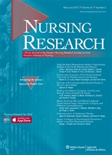
NURSING RESEARCH
Empowering nursing professionals with cutting-edge findings.Nursing Research, published by Lippincott Williams & Wilkins, is a prestigious academic journal dedicated to advancing the field of nursing through rigorous research and evidence-based practice. With an ISSN of 0029-6562 and an E-ISSN of 1538-9847, this journal has been a cornerstone of nursing scholarship since its inception in 1952. Currently ranked in the Q2 category for Medicine (miscellaneous) and in the Q1 category for Nursing (miscellaneous) as of 2023, Nursing Research is recognized for its high-quality contributions to the field and is ranked 38th out of 139 in General Nursing within Scopus. The journal offers essential insights and a forum for the latest research, enhancing clinical practices and informing policy decisions. Although it does not provide open access, it remains highly respected among researchers, professionals, and students alike, serving as an indispensable resource for those dedicated to improving patient care and advancing nursing science. For more information and to access articles, visit Nursing Research.

Japan Journal of Nursing Science
Exploring Evidence-Based Solutions for Modern HealthcareJapan Journal of Nursing Science, published by WILEY, serves as a pivotal resource in the field of nursing, focusing on innovative research and theoretical developments that enhance nursing science practices. With an ISSN of 1742-7932, this journal has established itself as a reputable platform, reflected in its 2023 rankings, which place it in the Q2 category for both Medicine (miscellaneous) and Research and Theory. Covering a broad range of topics crucial to the advancement of nursing, the journal provides researchers, professionals, and students access to high-quality studies, methodologies, and discussions that shape contemporary nursing practices and policies. Though not an Open Access journal, it contributes significantly to the academic discourse and research community, with emphasis on fostering evidence-based practices and promoting excellence in nursing education and healthcare delivery. With a cumulative publishing history from 2006 to the present, the Japan Journal of Nursing Science is committed to disseminating vital knowledge that enriches the nursing profession and improves patient care.

Collegian
Connecting Professionals to Transform Nursing Practice.Collegian is a distinguished academic journal published by Elsevier, focusing on the dynamic field of nursing. Launched in 1994 and continuing through to 2024, it aims to contribute to the advancement of nursing knowledge and practice. With an ISSN of 1322-7696 and an E-ISSN of 1876-7575, this journal has achieved an impressive standing, securing a Q2 category ranking within Nursing (miscellaneous) and positioning itself at #49/139 in the general nursing category on Scopus, with a commendable 65th percentile. The journal provides a platform for both established researchers and emerging scholars to share innovative research, case studies, and reviews that shape nursing education and practice. Although not open access, it remains widely recognized for its rigorous peer-review process and substantial contributions to nursing literature. As the profession evolves, Collegian stands out as a pivotal resource for professionals, educators, and students who seek to enhance their understanding and application of nursing science.

Nursing Reports
Fostering Collaboration in Nursing ResearchNursing Reports is a prominent open-access journal dedicated to disseminating scholarly research in the field of nursing and healthcare. Published by MDPI since 2020, the journal is based in Italy and features an ISSN of 2039-439X and an E-ISSN of 2039-4403. With rapid advancements in nursing practices and education, the journal serves as a vital platform for researchers, professionals, and students to share innovative findings and insights that enhance patient care and nursing methodologies. Recognized for its quality, the journal is ranked in the Q2 category in Nursing (Miscellaneous) for 2023, alongside a respectable position in the Scopus ranks, holding place #53 out of 139 in General Nursing, placing it in the 62nd percentile. The journal's commitment to fostering a collaborative research environment is underscored by its open-access model, allowing for unimpeded access to cutting-edge nursing research worldwide. As "Nursing Reports" continues to grow from its inception into its converged years spanning from 2014 to 2024, it plays a crucial role in the progression of the nursing profession and the overall healthcare landscape.
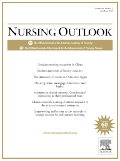
NURSING OUTLOOK
Championing Nursing Innovation for Enhanced Patient OutcomesNURSING OUTLOOK is a premier academic journal published by Elsevier Science Inc, dedicated to advancing the field of nursing and healthcare through high-quality research and discourse. Since its inception in 1953, this esteemed journal has provided a vital platform for sharing significant findings and innovations in nursing practices, policy, and education. With an impressive impact factor and a distinguished position in the Q1 category for Nursing (miscellaneous), NURSING OUTLOOK ranks #10 out of 139 in the Nursing General category, showcasing its contribution and authority in the field with a remarkable 93rd percentile ranking in Scopus. Researchers, professionals, and students are encouraged to engage with the journal's comprehensive scope that encompasses contemporary issues and trends in nursing, fostering a deeper understanding and improved patient care practices. Although open access options are not available, the journal remains committed to disseminating critical scholarship within the nursing community and beyond, inviting submissions that challenge existing paradigms and contribute to future health care developments.

Nursing Practice Today
Fostering Growth in Nursing ExpertiseNursing Practice Today is an esteemed journal published by Tehran University of Medical Sciences, focusing on the dynamic and essential field of nursing. Since its transition to Open Access in 2015, this journal has facilitated wider dissemination of knowledge, allowing researchers, professionals, and students alike to engage with pioneering studies and practical advancements in nursing care. With an impact factor that reflects its relevance within the academic community, it holds a Q3 ranking in the nursing (miscellaneous) category as of 2023, and ranks 77th out of 139 in general nursing according to Scopus, placing it within the 44th percentile for its field. Nursing Practice Today publishes high-quality research, reviews, and case studies that aim to elevate nursing practices and improve patient outcomes across a variety of healthcare settings. As a platform that champions the ongoing education and professional development of nursing specialists, this journal plays a pivotal role in shaping contemporary nursing practice and addressing emerging challenges in healthcare.
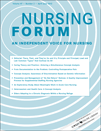
NURSING FORUM
Exploring Evidence-Based Practices for Optimal Patient Care.NURSING FORUM, published by Wiley-Hindawi, is a premier journal dedicated to advancing the knowledge and practice of nursing across diverse contexts. With an ISSN of 0029-6473 and E-ISSN 1744-6198, this esteemed journal has been a vital source of scholarly communication since its inception in 1961, serving researchers, practitioners, and educators in the nursing field. Recognized for its impactful contributions, it holds a prestigious Q1 ranking in Nursing (miscellaneous) and ranks #18 out of 139 in Scopus' General Nursing category, placing it in the top 87th percentile of its field. With its publication continuity from 1961 to 2024, NURSING FORUM promotes innovative research, evidence-based practices, and critical discourse essential for the nursing profession. This journal not only provides access to cutting-edge studies but also fosters a collaborative platform for healthcare professionals and academics to engage and share insights. Whether you are a seasoned researcher or a nursing student, NURSING FORUM is your essential gateway to the latest advancements and discussions that shape the future of nursing.
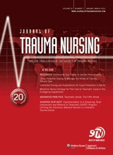
Journal of Trauma Nursing
Empowering Nurses with Cutting-Edge InsightsJournal of Trauma Nursing, published by LIPPINCOTT WILLIAMS & WILKINS, is a pivotal resource in the fields of trauma, critical care, and emergency nursing. With an ISSN of 1078-7496 and an E-ISSN of 1932-3883, this journal has been at the forefront of disseminating cutting-edge research and innovative practices since its inception in 1995, continuing through 2024. Positioned within the Q3 quartile of the Advanced and Specialized Nursing, Critical Care Nursing, and Emergency Nursing categories, it provides valuable insights into trauma care that enhance clinical practice and patient outcomes. The journal is recognized for its commitment to advancing knowledge and improving the quality of nursing care, making it an essential publication for researchers, practitioners, and students who are dedicated to the fields of trauma and emergency nursing. While currently not available as Open Access, it remains a reputable source of peer-reviewed content aimed at fostering a comprehensive understanding of trauma nursing. Located in the United States at TWO COMMERCE SQ, 2001 MARKET ST, PHILADELPHIA, PA 19103, the Journal of Trauma Nursing continues to impact the profession significantly.
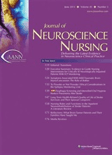
JOURNAL OF NEUROSCIENCE NURSING
Empowering Nursing through Neuroscience InsightsJournal of Neuroscience Nursing, published by Lippincott Williams & Wilkins, stands as a pivotal resource within the interdisciplinary field of neuroscience and nursing. With an ISSN of 0888-0395 and E-ISSN of 1945-2810, this journal has been dedicated to advancing knowledge and practice in neuroscience nursing since its inception in 1986. It aims to provide a platform for the dissemination of significant research, clinical guidelines, and innovative care strategies that shape the future of nursing in the neurological domain. The journal is recognized in various categories, achieving a Q1 ranking in Medical and Surgical Nursing and a Q3 ranking in Neurology (Clinical) as of 2023, highlighting its influence and relevance in the medical community. Although it does not operate on an open-access model, the journal's commitment to quality is evidenced by its strong Scopus rankings, including a notable rank of #3 out of 26 in Nursing - Medical and Surgical Nursing, reflecting its vital role in fostering scholarly discourse. Located in Philadelphia, PA, the Journal of Neuroscience Nursing is an essential publication for researchers, practitioners, and students dedicated to improving patient outcomes and advancing the field of neuroscience nursing.